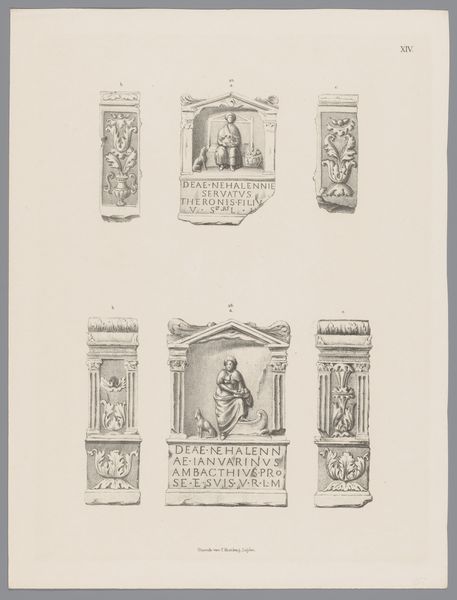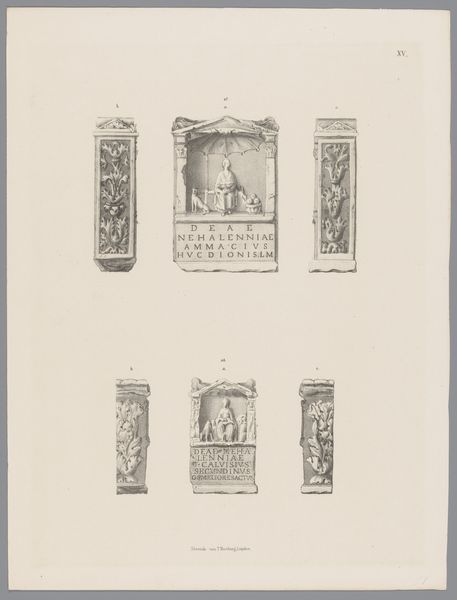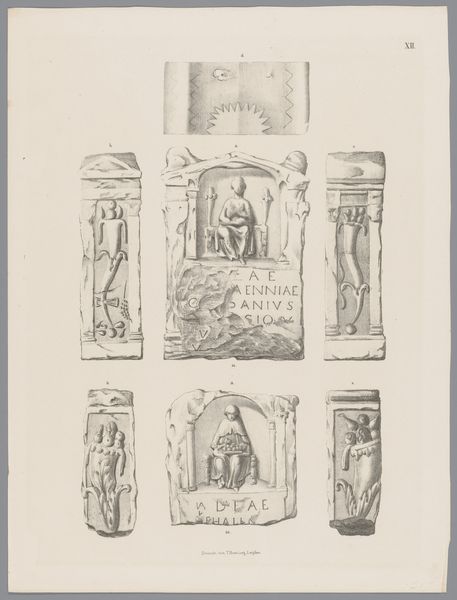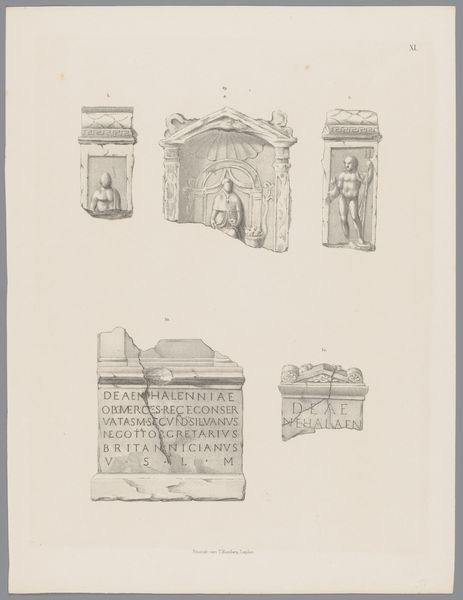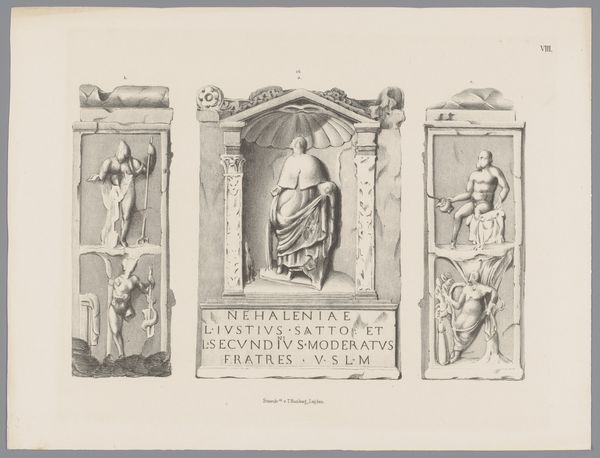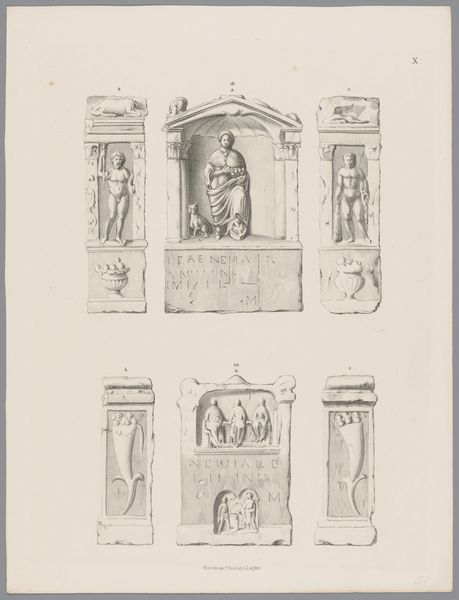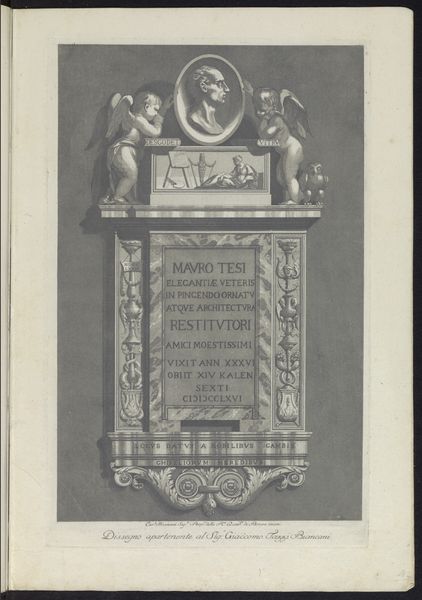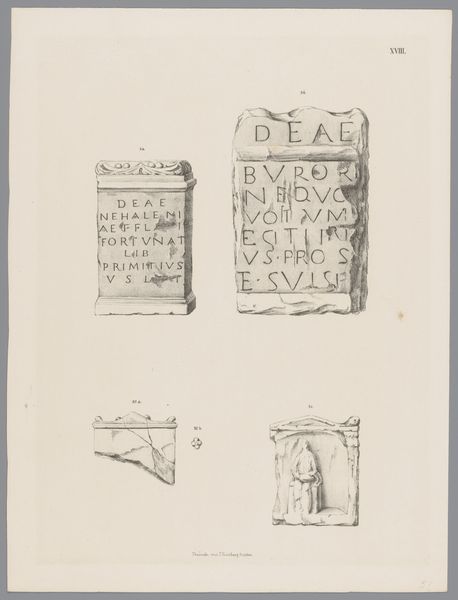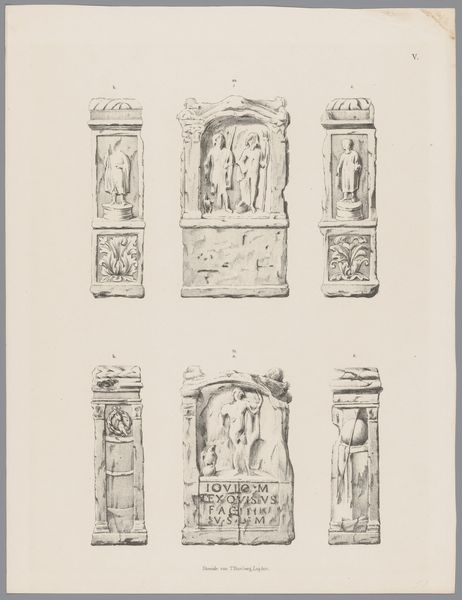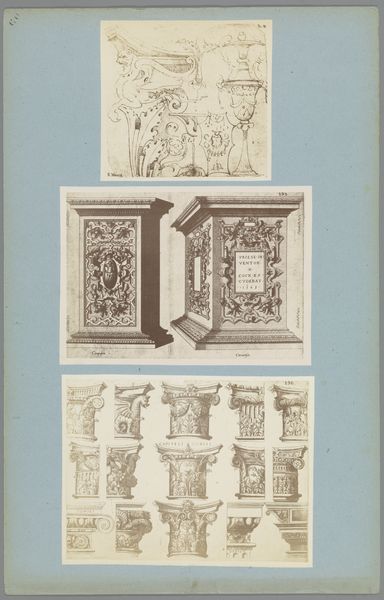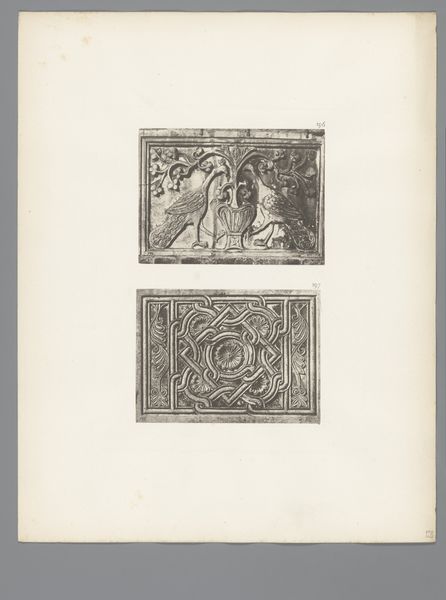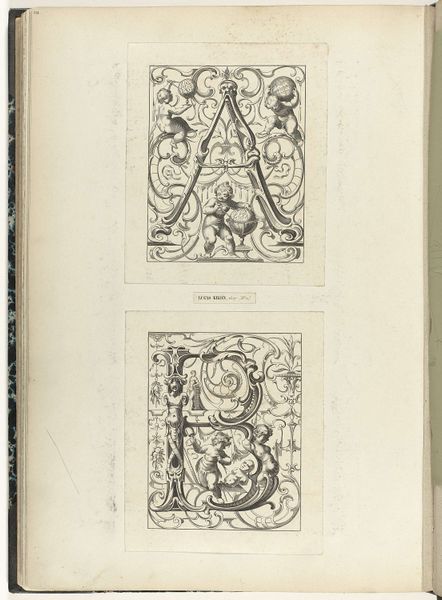
drawing, print, relief, ink, sculpture, engraving, architecture
#
portrait
#
drawing
# print
#
relief
#
figuration
#
romanesque
#
ink
#
geometric
#
ancient-mediterranean
#
sculpture
#
history-painting
#
engraving
#
architecture
Dimensions: height 360 mm, width 270 mm
Copyright: Rijks Museum: Open Domain
Curator: This print from between 1843 and 1845, titled "Twee Nehalennia-altaren, pl. XIII", showcases a detailed engraving of ancient Roman altars. I’m immediately struck by how meticulously rendered these objects are. There’s a real sense of mass and texture conveyed simply through line work. Editor: They feel stoic and worn by time. The rigid lines juxtaposed with the fluid curves in the foliage evoke a sense of tension. Tell me, who was Nehalennia, and why are these altars significant? Curator: Nehalennia was a local goddess, worshipped primarily in the area of what is now the Netherlands and parts of Germany. These altars were votive offerings, likely from merchants and sailors seeking safe passage across the North Sea. The carving materials themselves would have been chosen for durability, designed to withstand the elements and symbolically cement these transactions. Editor: The presence of merchants immediately raises questions about commerce, exchange, and power dynamics within this society. Was Nehalennia's appeal specific to a social class or gender? The text etched onto the altars themselves seems reserved, speaking to an exclusive patronage system. Curator: Inscriptions suggest a fairly broad base of worshippers, though predominantly those involved in maritime trade. And I find it fascinating how these Romanesque design elements merged with earlier local beliefs. We see this quite literally, where the altars themselves—as material objects produced by workshops employing specific engraving techniques—testify to the blending of cultures and manufacturing processes. Editor: It's also key to note the agency of marginalized groups. While we might perceive the sailors’ veneration through an economic lens, we must acknowledge that they turned to Nehalennia for protection. Their desires shaped her narrative within a larger patriarchal system. I find it revealing that a feminine deity embodies maritime welfare, an otherwise aggressively masculine field. Curator: The composition choices in this print highlight the physicality of these objects— the texture of the stone, the deliberate arrangement of symbols. This wasn't about aesthetic representation, it was about capturing their weight and the embodied labor of their creators. Editor: I agree. This engraving provides a nuanced view. It unveils intersections of class, labor, spirituality, and gender—all carved in stone. It's compelling to see those concerns articulated in an archeological medium that often suppresses critical discussion. Curator: The skill employed by those artisans in constructing them echoes across centuries of human creative process, demonstrating craftsmanship, beliefs and culture. Editor: Precisely. Art can invite exploration across those complex power dynamics if you look carefully enough.
Comments
No comments
Be the first to comment and join the conversation on the ultimate creative platform.
